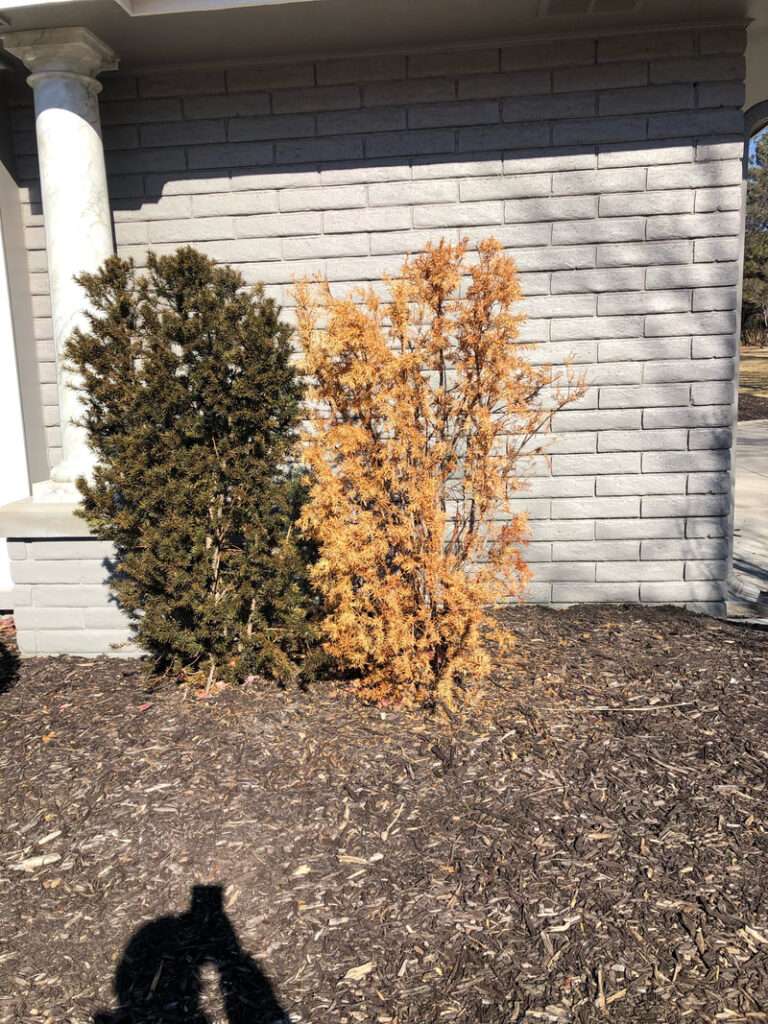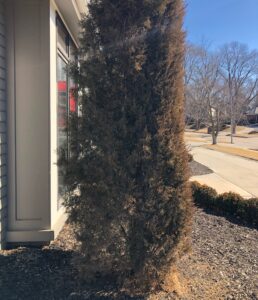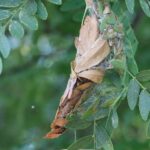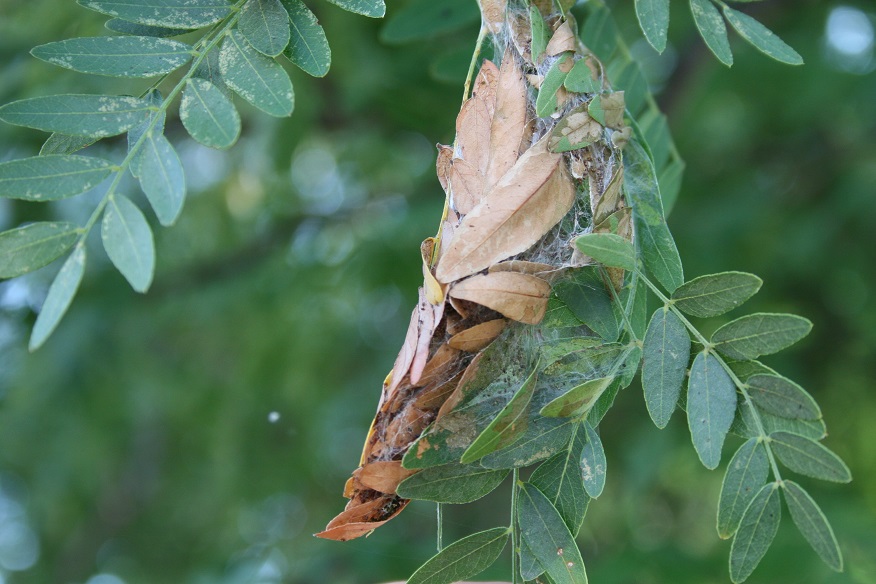How Winter Burn Occurs and How to Reduce the Risk
Winter burn prevention is essential for protecting trees and shrubs during cold, dry winters. Winter burn is a physiological disorder that affects both evergreen and semi-evergreen species[i]. These plants continue to transpire (release moisture) through their leaves and needles throughout the winter. During the growing season, this moisture loss is easily replaced, but winter conditions—especially reduced snowfall and precipitation—make that impossible.
[i] https://extension.psu.edu/preventing-winter-burn-on-evergreen-landscape-plants
In recent years, prolonged dry winters have increased the severity and frequency of winter burn across the region. Evergreen plants are particularly vulnerable, often showing brown needle margins or, in more severe cases, complete needle death.
How Winter Burn Affects Trees and Shrubs
Because evergreens do not quickly regenerate needles, winter burn damage can be long-lasting. In mild cases, plants may recover slowly over multiple seasons. In more severe situations, winter burn can permanently disfigure or kill trees and shrubs altogether. Effective winter burn prevention reduces stress, preserves plant appearance, and protects long-term landscape investments.
Factors That Increase the Risk of Winter Burn
Several environmental and site-related conditions can increase the likelihood and severity of winter burn, including:
- Increased exposure to winter winds
- Proximity to roads, where road salt accelerates moisture loss
- Locations close to buildings, where radiant heat intensifies dehydration on the plant side facing the structure
Understanding these risk factors is a critical step in proactive winter burn prevention.


Species most susceptible to winter burn
Certain trees and shrubs are especially prone to winter burn due to needle structure, shallow root systems, or slow recovery rates. High-risk species include:
- Dwarf Alberta spruce
- Arborvitae
- Junipers
- Boxwoods
- Young redbuds
- Japanese maples
These plants benefit the most from targeted winter burn prevention strategies.
What you can do at home
Homeowners can take simple steps to reduce winter burn risk. Watering sensitive trees and shrubs during warmer winter days—when temperatures rise above 40 degrees—can help replenish soil moisture. If outdoor hoses are shut off due to freezing temperatures, a five-gallon bucket with a small hole drilled near the bottom can be used to deliver water slowly and deeply to the root system. Place the bucket near the base of the tree, fill it, and allow it to drain naturally.
Consistent winter watering is one of the most effective DIY winter burn prevention techniques.
Anti-Transpirant Spray Services to Prevent Winter Burn
Professional winter burn prevention services provide added protection when environmental stress is severe. We offer anti-transpirant, commonly known as “wilt-proof,” sprays that are applied once or twice per season. These treatments coat evergreen foliage with a thin, waxy layer that reduces moisture loss while still allowing the plant to breathe.
In many cases, anti-transpirant applications make the difference between healthy, lush evergreens in spring and the costly replacement of damaged plants, such as entire rows of arborvitae. When combined with proper winter watering, these treatments offer a highly effective approach to winter burn prevention.






